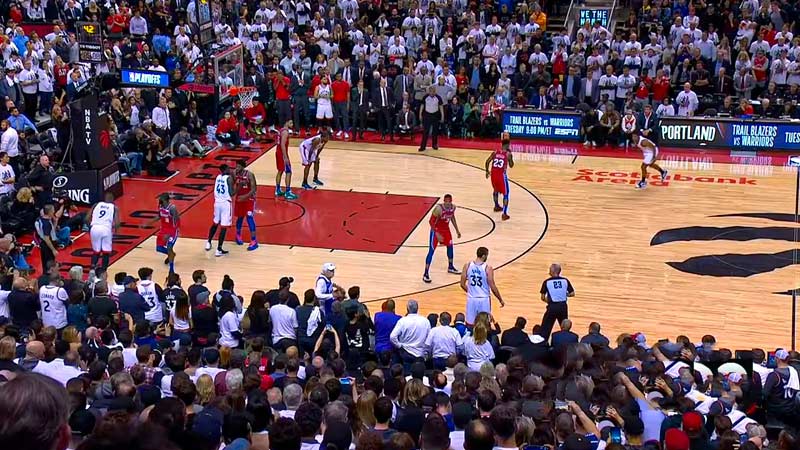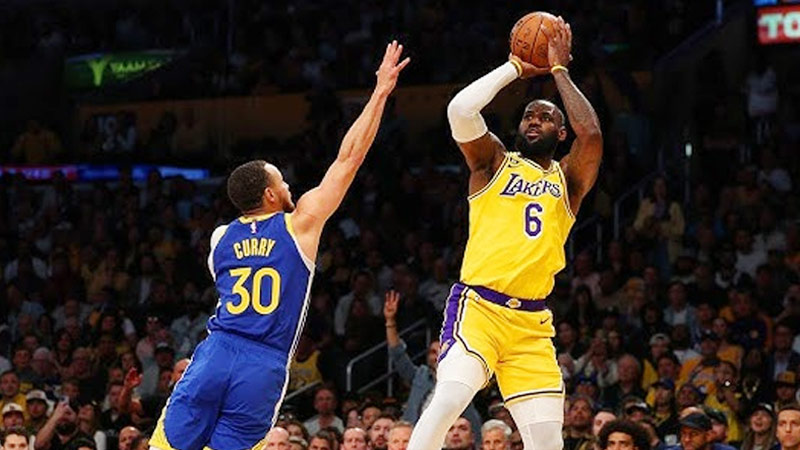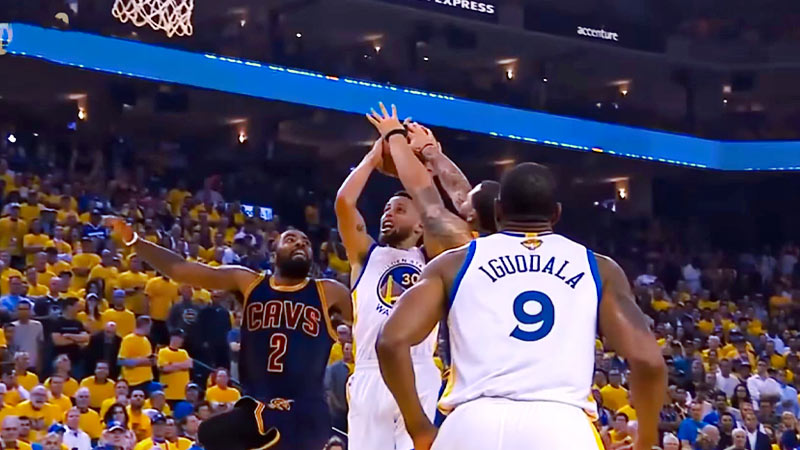Basketball is a thrilling sport loved by fans around the globe, and understanding its fundamental structure is essential for both players and spectators.
One key aspect of basketball games is the division into quarters. In this article, we will delve into the number of quarters in NBA games, explore the rules surrounding quarters in the NBA, etc.
We will also discuss the significance of this structure in enhancing the flow and strategy of the game. So, join our discussion to learn about this fact in detail.
What Is A Quater in Basketball?
In basketball, the term “quarter” refers to one of the four equal periods into which a game is divided. A typical basketball game consists of four quarters, each lasting 12 minutes in the professional NBA (National Basketball Association).
In some other basketball leagues, such as FIBA (International Basketball Federation), college basketball, or high school basketball, the length of the quarters may vary.
At the end of each quarter, there is a break called a “quarter break” or “quarter-time break.” During this break, teams and players can regroup, rest, receive coaching instructions, and make any necessary substitutions. The clock is stopped during these breaks.
The scores of each team are typically recorded at the end of each quarter. The team with the higher score at the end of the fourth and final quarter is declared the winner of the game.
If the scores are tied at the end of the fourth quarter, the game may go into overtime, where additional periods are played until there is a winner.
Each quarter provides an opportunity for teams to assess their performance, make strategic adjustments, and try to outscore their opponents.
The game often evolves over the course of the quarters, with teams adapting their strategies and making tactical decisions to gain an advantage.
In the fast-paced and exhilarating world of NBA basketball, games are divided into four quarters, each lasting 12 minutes.
This traditional format has been a staple of professional basketball for decades and has proven to provide a balanced and structured framework for teams to showcase their skills and strategies.
The 48-minute game duration allows for ample time for teams to compete, adapt, and respond to the ever-changing dynamics on the court.
Each quarter represents a distinct segment of the game, where teams have the opportunity to make an impact and build momentum.
The four-quarter format also aligns with the natural rhythm of basketball, allowing for strategic adjustments, rest periods, and dynamic shifts in the game.
It creates an ebb and flow that captivates fans and provides moments of intensity and excitement throughout the entirety of the game.
Rules of Quarters in NBA Basketball Games

While the NBA follows the standard four-quarter format, there are specific rules and regulations regarding timeouts and breaks within each quarter.
These rules are crucial for players, coaches, and fans alike. Let’s take a closer look at the key rules related to quarters in NBA basketball games:
Quarter Timing
Each quarter in an NBA game lasts for 12 minutes, adding up to a total game time of 48 minutes. This fixed duration ensures consistency and allows teams to plan and strategize accordingly.
Overtime
In the event of a tie score at the end of regulation play, the game can proceed into overtime. Each overtime period is an additional five minutes long. Overtime provides an opportunity for teams to break the tie and determine a winner.
Mandatory Timeouts
The first and second quarters have a mandatory timeout at the 6:00 mark. This timeout provides an opportunity for coaches to address their players, make necessary adjustments, and offer strategic guidance.
It allows teams to regroup, analyze the game’s progress, and modify their approach if needed.
First Timeout of the Third and Fourth Quarters

In the third and fourth quarters, the first mandatory timeout occurs at the first dead ball under the 6:59 mark. Similar to the earlier timeouts, this break allows teams to regroup and strategize for the remainder of the game.
It offers a chance to assess the game’s momentum and make necessary tactical decisions.
Additional Timeouts
In addition to the mandatory timeouts, teams are also allowed to call timeouts during the game. These additional timeouts can be used strategically to halt the opponent’s momentum, manage fatigue, or discuss crucial plays.
Teams often utilize timeouts to make adjustments, draw up new plays, or provide rest to key players.
These rules are essential for teams to manage their time effectively, make critical decisions, and maintain control over the game.
Coaches must carefully consider when to use their timeouts for maximum impact, while players need to be aware of the game’s timing and the implications of each quarter’s progress.
Moreover, fans benefit from knowing these rules as it enhances their understanding and enjoyment of the game.
Recognizing the strategic significance of timeouts and breaks within quarters allows fans to appreciate the decision-making processes of coaches and the potential turning points in a game.
Significance of Quarters in NBA Basketball Games

The division of NBA basketball games into quarters holds significant importance and serves multiple purposes that contribute to the overall experience of the game:
Strategy and Adjustments
The division into quarters provides distinct segments within the game where coaches can evaluate the team’s performance, identify strengths and weaknesses, and make necessary tactical adjustments.
Coaches can analyze the opponent’s strategies, implement new plays, and address any challenges faced on the court.
The quarter breaks offer a valuable opportunity to communicate with players, provide feedback, and devise effective game plans for the upcoming quarter.
Rest and Recovery
Basketball is an intense and physically demanding sport, and quarters offer short breaks that allow players to catch their breath, regroup, and receive guidance from coaches.
These brief intermissions are vital in managing player fatigue, providing an opportunity for hydration, and maximizing performance throughout the game.
The rest periods help players maintain their energy levels, prevent injuries, and ensure that they can continue to compete at a high level.
Momentum Shifts
The structure of quarters in NBA games introduces natural shifts in momentum and scoring opportunities for both teams. Each quarter begins with a reset score, offering a chance for teams to rally and potentially change the course of the game.
A team that may have struggled in the previous quarter can use the break to analyze their performance, make adjustments, and come back with renewed focus and determination.
The quarter breaks provide an element of suspense and anticipation, as teams strive to gain momentum and take control of the game.
Analysis and Commentary
Quarters facilitate analysis and discussions among commentators, broadcasters, and fans. The division into quarters provides natural breakpoints for assessing the game’s progression, analyzing individual performances, and engaging in insightful conversations about strategy and gameplay.
Commentators and analysts can evaluate each quarter’s outcomes, highlight key plays, and provide expert analysis during the breaks.
This enhances the viewing experience for fans, allows for in-depth discussions, and adds to the overall excitement and engagement surrounding the game.
The division into quarters in NBA basketball games serves a multitude of purposes. It allows for strategic adjustments, provides necessary rest and recovery time, creates opportunities for momentum shifts, and facilitates analysis and commentary.
FAQs
Can a basketball game have more than four quarters in the NBA?
No, in the NBA, a basketball game consists of four quarters. However, in the event of a tie score at the end of regulation play, the game can proceed into overtime, which consists of additional five-minute periods.
How long are the breaks between quarters in NBA games?
The breaks between quarters in NBA games typically last around two to three minutes. This time allows players to rest, coaches to provide guidance, and broadcasters to provide analysis and commentary.
Can teams call timeouts during the quarters in NBA games?
Yes, teams are allowed to call timeouts during the game, including within each quarter. These timeouts provide an opportunity for teams to regroup, discuss strategies, and make substitutions as needed.
What happens during the mandatory timeouts in NBA games?
Mandatory timeouts in NBA games allow coaches to address their players, make strategic adjustments, and provide guidance. These timeouts also give players a chance to rest and recover briefly.
Do the quarters in NBA games have a different significance compared to other basketball levels?
The significance of quarters in NBA games is similar to other levels of basketball. They provide structure, breaks, and opportunities for strategy, rest, and momentum shifts.
However, specific rules and timing may vary among different basketball leagues.
Conclusion
In NBA basketball games, there are four quarters, each lasting 12 minutes, making a total game time of 48 minutes.
These quarters play a vital role in the flow and structure of the game, allowing for strategic adjustments, rest, and natural shifts in momentum.
The rules and significance of quarters enhance the overall appreciation and enjoyment of NBA basketball.
So, the next time you watch an NBA game, pay attention to the quarter-by-quarter progression and appreciate how this structure contributes to the excitement and strategy of the sport. Thank you.







